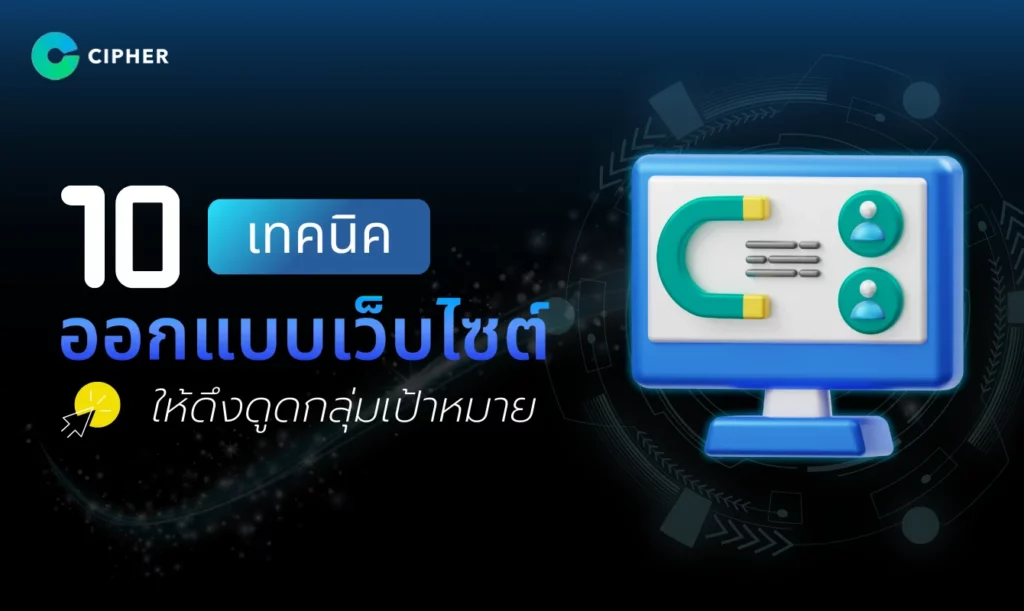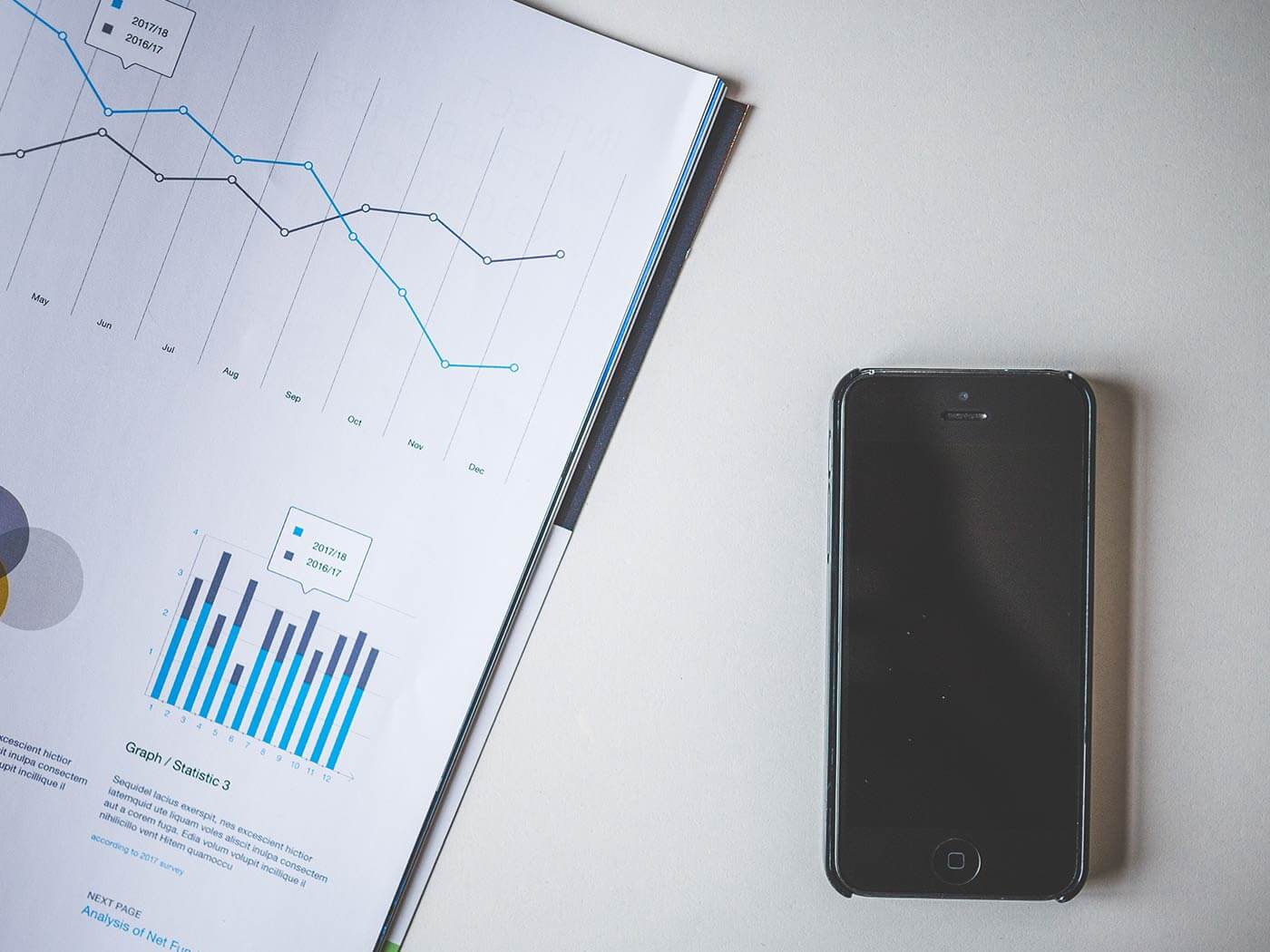Table of Contents
Website Design: 10 Techniques for Designing Sites to Attract Targets
Have you ever wondered? Why do some sites attract so many customers while others are lonely? Nowadays, people’s website usage behavior has changed, so having just a regular website may not be enough anymore, and it will make your website more unique. It’s about design techniques, not just beautiful, but satisfying the user and creating the actual sales.
Today, we will unveil 10 web design techniques that will transform ordinary visitors into your customers immediately. These techniques have been proven by leading Web sites, and we will show you how to apply them to your business. Some.
What is Website Design?
Website Design is the creation of both beauty and functionality of the website, with user-centered consideration. The effective design of the website must take into account two main components:
- User Interface (UI): A beautifully designed website that includes:
- the beauty of the design
- the arrangement of elements in an orderly fashion
- refinement in detail
- User Experience (UX): A website with a user-friendly design that includes:
- The site structure is simple to use, simple to use.
- The elements are clearly visible.
- The layout of the content, images, and Call to Action or buttons is organized.
Other elements must also be focused on creating a complete website, such as choosing the right font, custom design support, and performance testing, which should not be overlooked.
Why is design important?
Currently, brands and businesses value their image online because the website is an important tool that can enhance their image. The factors that make website design something that should not be overlooked are as follows:
- Make the first impression: The first page of the website is where visitors know your brand or business. The design of the website will draw attention and give them confidence in the quality of products and services.
- Focus on the user experience: Designing a website should take into account the user’s usage, such as easy-to-read content layout or quick page loading, which will help keep users on the website longer and back.
- Increase Marketing Opportunities: A well-designed website will enable more online marketing strategies, such as SEO and social media advertising, allowing businesses to reach their target audience more effectively.
- Promote brand image: Design that is consistent with brand identity, such as color, logo or font. These help communicate brand or business identity and allow website users to recognize your brand or business.
In order for the website to be used more efficiently, two main stakeholders are Web Designer, the author of the website’s design and layout, and Web Developer, who writes code in languages such as JavaScript, CSS, and CSS. Or HTML to create web functionality. Having a team that provides a good web design service definitely increases the chances of your business.
10 Web Design Techniques to Attract Targets
The website is a popular communication channel around the world and can quickly create awareness, allowing companies, organizations and businesses to build their own website and to create a positive image for organizations. Web design techniques are needed to attract the target audience with the following key techniques:
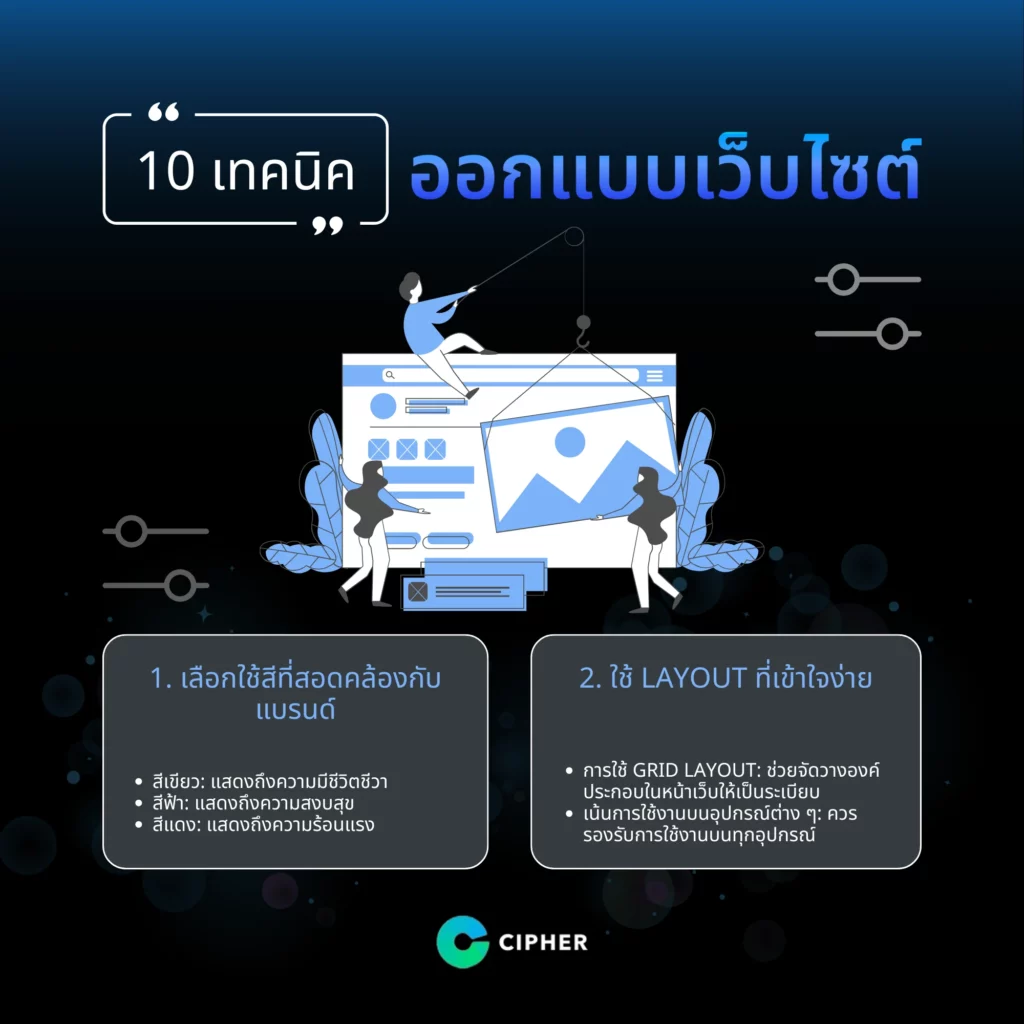
1. Choose a color that corresponds to the brand.
Color selection is important in the design of the website. Color that is beautiful, unique and eye-catching affects the user’s experience and first impressions. Color choices can indicate the brand’s identity and image, for example:
- Green: indicates vitality or naturalness.
- Blue: represents peace.
- Red: Indicates hotness or confidence.
Choosing the right color for your product or service will help identify your brand or business and make it easier for website users to recognize your brand or business.
2. Use easy-to-understand layout
The easy-to-understand layout design allows users to access information easily. This allows users to feel satisfied and feel good while using the website. Most importantly, the layout design is easy to use, such as:
- Grid Layout: Grid layout helps balance and organize web page elements and gives users a clear view of content and functions.
- Focus on devices: Layout should be supported on all devices such as mobile phones, tablets and computers, and check that the content and buttons are still clear and easy to use on a small screen.
3. Create a Unique Call-to-Action (CTA)
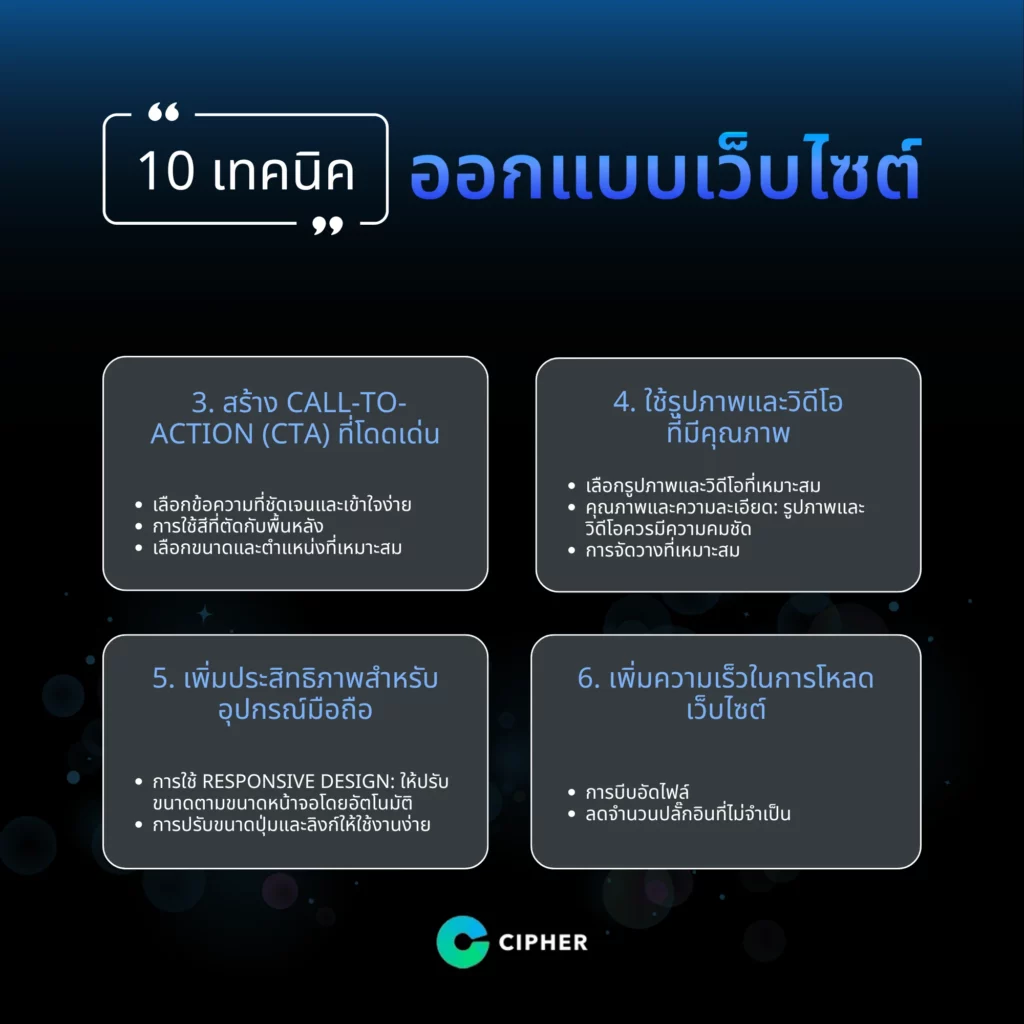
The unique Call-to-Action (CTA) website is designed to motivate users to achieve their goals. Good CTAs need to be visually appealing, easy to use and deliver clear messages such as:
- Choose clear and easy-to-understand text: e.g. “Buy Now” or “Free Download”
- Use of background contrasting colors: should be different from the background or the color of the content on the website to appeal to the eye.
- Select the appropriate size and location: it should be clearly visible but should not be too large and placed in an easy-to-click position, such as at the end of important content.
4. Use quality photos and videos
Designing a website using quality photos and videos is a key component of the website’s appeal as images and videos can communicate better and impress users than text messages alone.
- Choose the appropriate photo and video: by business-related photos or videos or by using interesting editing techniques.
- Quality and Resolution: Photos and videos should be sharp, but not so big that websites are slow to load. For example, photos should use WEBP files.
- Ideal layout: Place the image in a position that supports the text, such as near the main topic or in a user-friendly spot.
5. To enhance the efficiency of mobile devices (Mobile-Friendly Design)
With most Internet users accessing websites via smartphones, designing websites to effectively support not only the user experience but also the ranking in SEO search engines. Examples of website adjustments for mobile devices include:
- Using Responsive Design: Interaction-Design, a UX/UI design website that provides important information on responsive design priorities to automatically scale and layout according to screen size, should focus on simplicity.
- Easy-to-use button and link resizing: The buttons and links should be large, easy to click, and space between buttons to minimize false clicks.
6. Increase the speed of loading websites
Increasing the speed of loading websites is a key factor in the process of designing websites. This affects the user experience and the SEO search engine’s ranking. If the website is loaded 3 seconds later, users leave the website immediately. Most importantly, your brand or business may lose sales opportunities.
- File compression: Image file size should be reduced by using appropriate format such as WEBP or JPEG.
- Reduce the number of unnecessary plug-ins: Web sites have a lot of play to attract attention, but they have to be downloaded more time-consuming, so they should be designed to be simple.
7. Use Easy-to-Read Typography
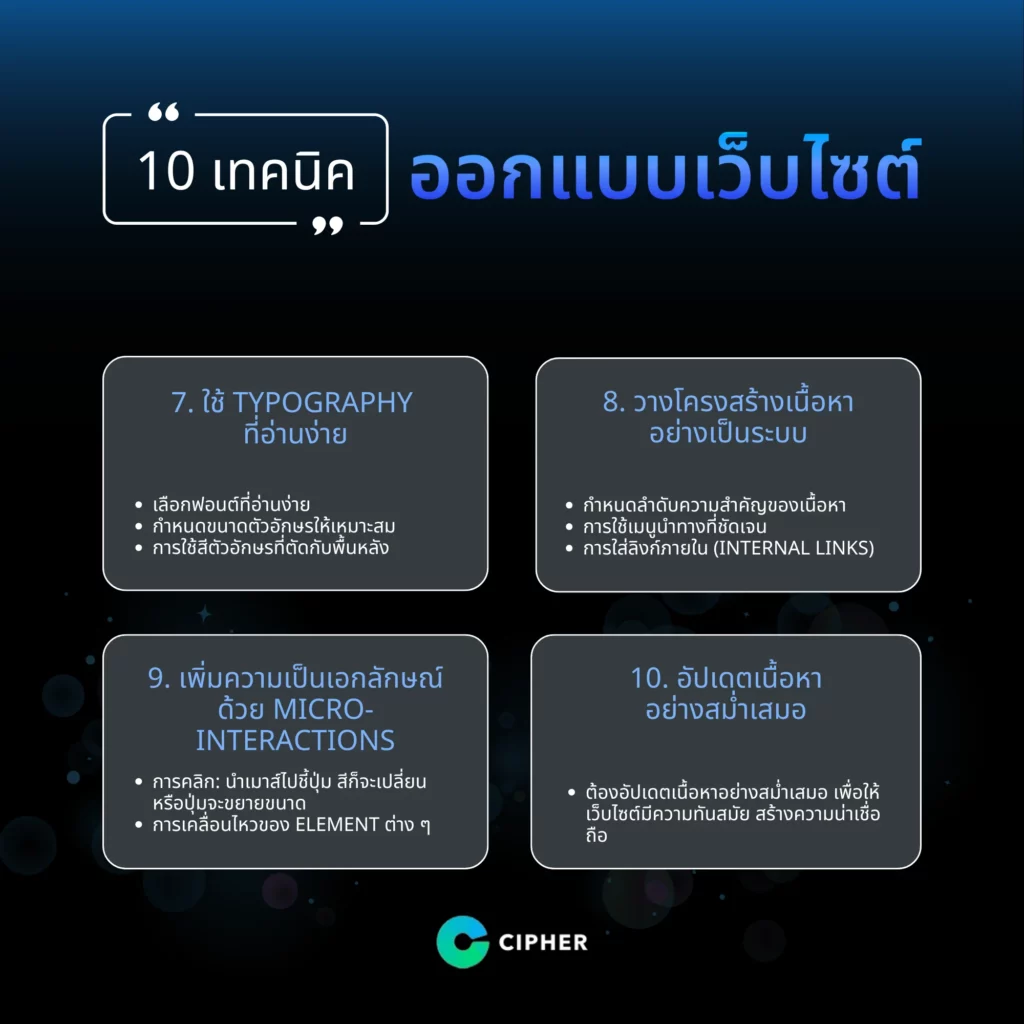
Designing websites using simple-to-read typography creates a great user experience. Choosing the right font, font layout and size will make text more appealing and easy to understand. The choices are as follows:
- Choose an easy-to-read font: Choose a font that suits the content and avoid complicated or difficult-to-read fonts.
- Define font size: The recommended font size for content is 16px – 18px, and the subject should be larger than the content to attract attention.
- Font coloration: Sharp colors should be used and contrasted with background colors, such as black characters on white, and bright or light colors that are difficult to read should be avoided.
8. Structured Content in a Systematic manner
Systematic site content structure is at the heart of good site design because it makes it easy for users to find the information they want, enhance their user experience, and enhance SEO performance, helping to build reliability for websites that are popular, such as:
- Prioritize Content: Which information is most important, such as the Home Page, Goods/Services, or about us, and using the main topic H1 and subtopic H2 or H3 to prioritize content?
- Navigation Menu: The menu should cover all main topics, such as the front page, about us, services/goods, articles, or contact us, which should be easy to understand.
- Internal Links: Attaching links to link pages within a website makes it easier for users to explore other content.
9. Increase Identity with Micro-interactions
Designing a website by enhancing its uniqueness with Micro-interactions is one of the strategies to make the website stand out, attractive and a better user experience. Micro-interactions are small components that respond to user actions, such as:
- Clicking: When the user points the mouse, the color button changes or the button expands, drawing attention to key elements such as the Call-to-Action button.
- Element movement: Having an image or a drop-down menu bar will make the website look interesting and not boring when accessing it.
- Loading Animation: Loading a small image or animation page instead of displaying a simple loading bar to help reduce boredom during waiting.
10. Update content regularly
Web design needs to be updated regularly to keep websites up-to-date, reliable, and meet new users’ needs. Content updates include not only adding new information, but also updating and adjusting the same information to suit current user search times and trends.
Example of a well-designed website
Website Design or website design requires a prototype or use of a beautiful Ref before building a real website. It can be used in a variety of ways, such as:
- Photos website search: Idea search. Thumbnails from image service websites such as Pinterest or Freeepik, which have beautiful website thumbnails for ideas.
- Use web design company service: Designing a website from a specialized company that analyzes UX/UI from direct experience will make page design more efficient.
Examples of websites: Asia Books

Asia Books, Thailand’s largest online bookstore website, offers a wide selection of English and foreign books. The website has beautiful design, easy to use and quick page display despite the large number of products, creating a great web experience for users.
Start designing your website outstandingly to appeal to the target audience today! ที่ CIPHER
If you want to change the website to be more prominent than anyone else, CIPHER is your answer! Because we are a web designer company with experts in design and solutions from planning, designing beautiful graphics, continuously developing websites to maintain website performance. We understand the needs of businesses in various industries and create a website that meets your business needs.
With CIPHER’s compelling website design service, you can get a website that’s not only beautiful but also enhanced sales and strengthened brands. We’re ready to help your business grow with more advanced technology!

